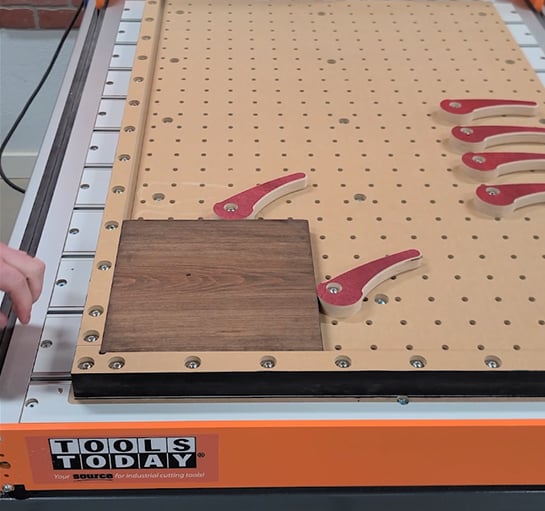Must-Know Vocabulary and Concepts for CNC Routers (Beginner’s Guide)
Getting started with a CNC router can feel overwhelming. Tutorials and guides are full of unfamiliar terms—feeds and speeds, step-over, spoilboard, G-code. This glossary explains the essential CNC vocabulary and concepts so you can follow tutorials, troubleshoot issues, and get the most out of your machine.
In This Guide
- Why Learning CNC Vocabulary Matters
- CNC Router Basics: Core Terms
- Motion & Positioning Concepts
- Cutting Parameters
- Tool Types & Common Toolpaths
- Workholding & Setup Terms
- Software & Control Concepts
- Common Beginner Pitfalls
- Quick Reference Glossary
- Conclusion & Next Steps
Why Learning CNC Vocabulary Matters
- Understand tutorials and videos without confusion.
- Avoid costly mistakes that damage tools or material.
- Diagnose issues faster and communicate with other makers.
CNC Router Basics: Core Terms
- CNC (Computer Numerical Control): Automates machine tools using computer instructions.
- G-code: The language that tells the CNC how to move, how fast, and when to cut.
- Axes (X, Y, Z): X = left/right, Y = front/back, Z = up/down.
- Workpiece / Stock: The material you’re cutting.
- Tool / Bit: The cutting tool in the spindle that removes material.

Motion & Positioning Concepts
- Home / Homing: The machine’s reference point (machine zero), usually set with limit switches.
- Work Zero (Origin): Your defined start point on the stock (often front-left, top surface).
- Jogging: Manually moving the spindle via controller software.
- Step-over: Lateral distance between adjacent toolpaths during pocketing/3D carving.
- Step-down (Depth of Cut): Vertical depth removed per pass.
Cutting Parameters
- Feeds and Speeds: Balance of spindle RPM (bit rotation speed) and feed rate (travel speed). Correct values prevent burning and broken bits.
- Plunge Rate: Speed at which the bit descends into material.
- Chip Load: Thickness of material removed by each cutting edge per revolution; key to clean, cool cutting.

Tool Types & Common Toolpaths
Common CNC Router Bits
- Flat End Mill: Square tip for pockets, contours, sharp edges.
- Ball Nose End Mill: Rounded tip for smooth 3D carving.
- V-Bit: Angled tip for engraving, lettering, and inlays.
Common Toolpaths
- Profile Cut: Follows the outline of a shape.
- Pocket Cut: Clears material within a boundary.
- Relief Carving: 3D surface carving with varying depth.

Photo Credit: Tools Today
Workholding & Setup Terms
- Spoilboard: Sacrificial layer under stock to protect the machine bed (often MDF).
- Clamps: Mechanical hold-downs gripping the material edges.
- Vacuum Table: Uses suction to keep material flat (popular on larger machines).
- Double-Sided Tape / CA Glue + Tape: Common method for small parts without clamps.
- Toolpath Simulation: CAM preview of the cut to catch mistakes before pressing start.

Software & Control Concepts
- CAD (Computer-Aided Design): Create/draw parts (e.g., Fusion 360, FreeCAD).
- CAM (Computer-Aided Manufacturing): Generate toolpaths and G-code from CAD.
- Post-Processor: Adapts CAM output to your controller’s requirements.
- Controller Software (G-code Sender): Sends G-code and provides jogging/homing controls (e.g., Candle, UGS, CNCjs).
Typical flow: CAD → CAM → Post-Processor → Controller Software → Machine.
Common Beginner Pitfalls
- Zeroing Confusion: Mixing up machine zero and work zero causes offsets/crashes.
- Over-aggressive Step-down: Deep cuts without proper feeds/speeds break bits.
- Ignoring Chip Load: Too shallow/slow overheats tools and burns wood.
- Poor Workholding: Stock movement ruins jobs; secure it well.
- Skipping Simulation: Not previewing toolpaths leads to collisions and scrap.
Quick Reference Glossary
| Term | Definition |
|---|---|
| G-code | Programming language that controls CNC movements. |
| Step-over | Lateral distance between adjacent toolpaths. |
| Step-down | Depth of cut per pass. |
| Spoilboard | Sacrificial surface protecting the machine bed. |
| Chip Load | Thickness of material removed per cutting edge per revolution. |
| Work Zero | Starting point you set on the workpiece. |
| Feed Rate | Tool’s travel speed through material. |
| Plunge Rate | Downward speed of the tool into material. |
| Relief Carving | 3D surface carving with depth variation. |
Conclusion & Next Steps
Mastering the language of CNC—feeds and speeds, step-over, spoilboard, G-code—makes every part of the process easier. Use this glossary as a quick reference while you practice and your confidence will grow rapidly.




